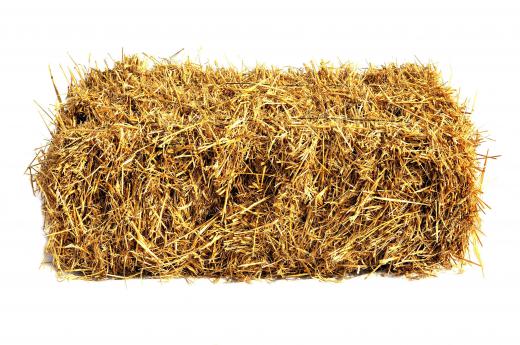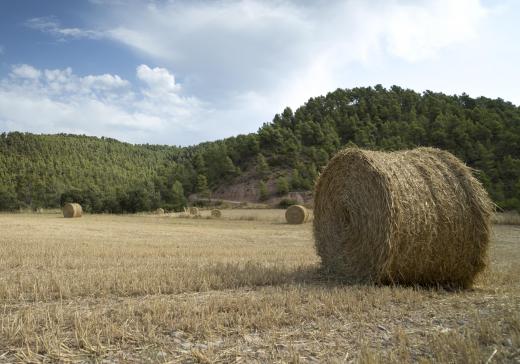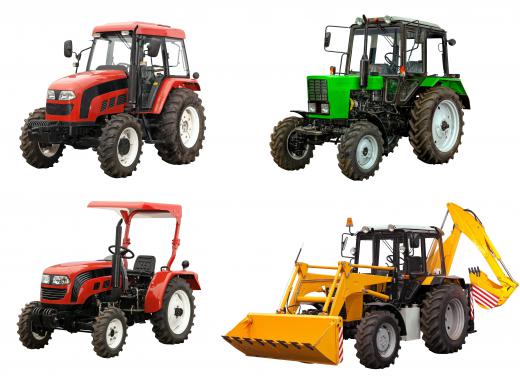Farmers often use a tractor baler when gathering hay because it is more efficient than performing this task by hand. This equipment is used to collect cut grass or pine straw, compact the material, and then form it into a bale. An agricultural baler can vary in appearance based on the size and type of bales it produces. It is normally towed behind another vehicle, and driven over open fields or in large pine groves. There are different types of balers, used for a variety of purposes.
Before using a tractor baler, workers normally mow heavy grass with a device known as a bush hog. The cut grass may then be allowed to dry for a few days so the finished product is not too wet. A bailer then runs over the top of the cut grass, where it sucks the material into the mechanism itself. Once enough grass has been gathered, it is then compacted by the machine to form a bale. Small hay bales are often secured with twine, and the tractor baler sometimes contains a device to help with this.

A tractor baler is sometimes used to bale pine straw, in which case it may be driven into the woods. One of these types of balers is normally smaller than one used for baling hay because it will need to fit into tight areas. Like one used for bailing hay, this equipment absorbs material and then compacts it into tight segments. It is not important to mow the grass underneath the pine straw first, but pinecones and rocks should be removed from the area so they do not damage the bailing attachment.

Some hay balers can be up to 10 feet (3.05 m) tall, while others may stand around 3 to 4 feet (0.91 to 1.2 m) high. These machines can be between 4 to 8 feet (1.2 to 2.4 m) long. Models that produce round bales are typically very large ones, while units that make square bales could be much smaller. A large tractor baler is normally more square and boxy in appearance than smaller pieces of equipment are.

This type of equipment is normally towed by a farm tractor, but smaller models may be used with a riding lawn mower. It is very important to use the right size machine to haul this implement because it may be difficult to operate if moved by too-small equipment .Since there are different sizes, a hay baler can be found to suit almost any purpose whether used to produce large amounts of hay for resale or simply clean up residential property.
